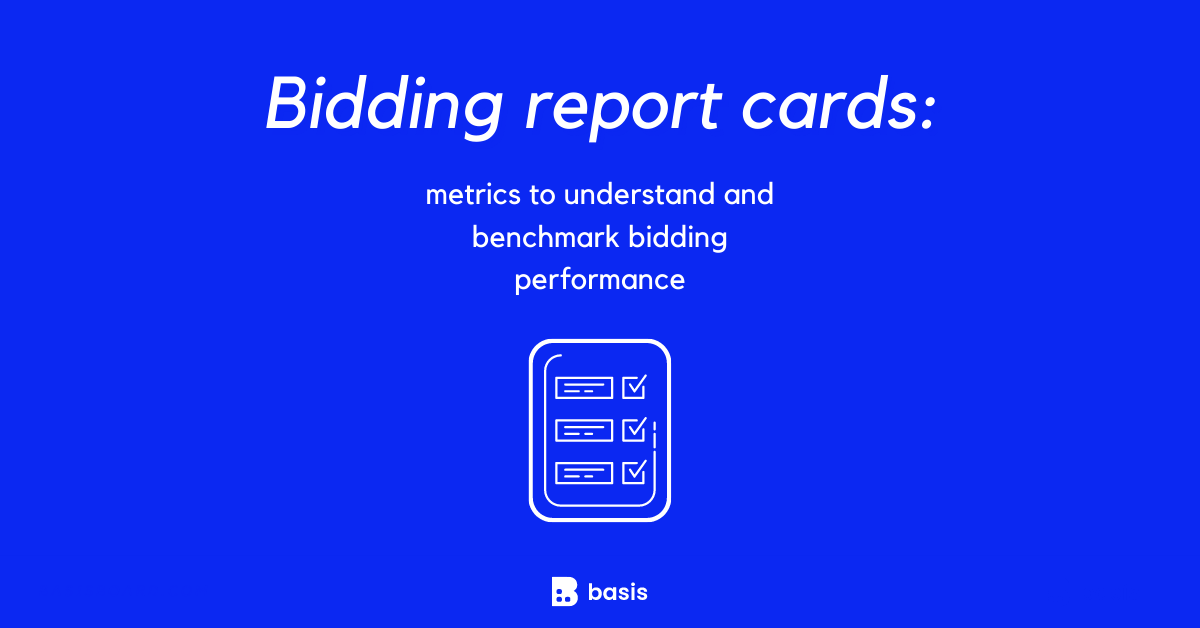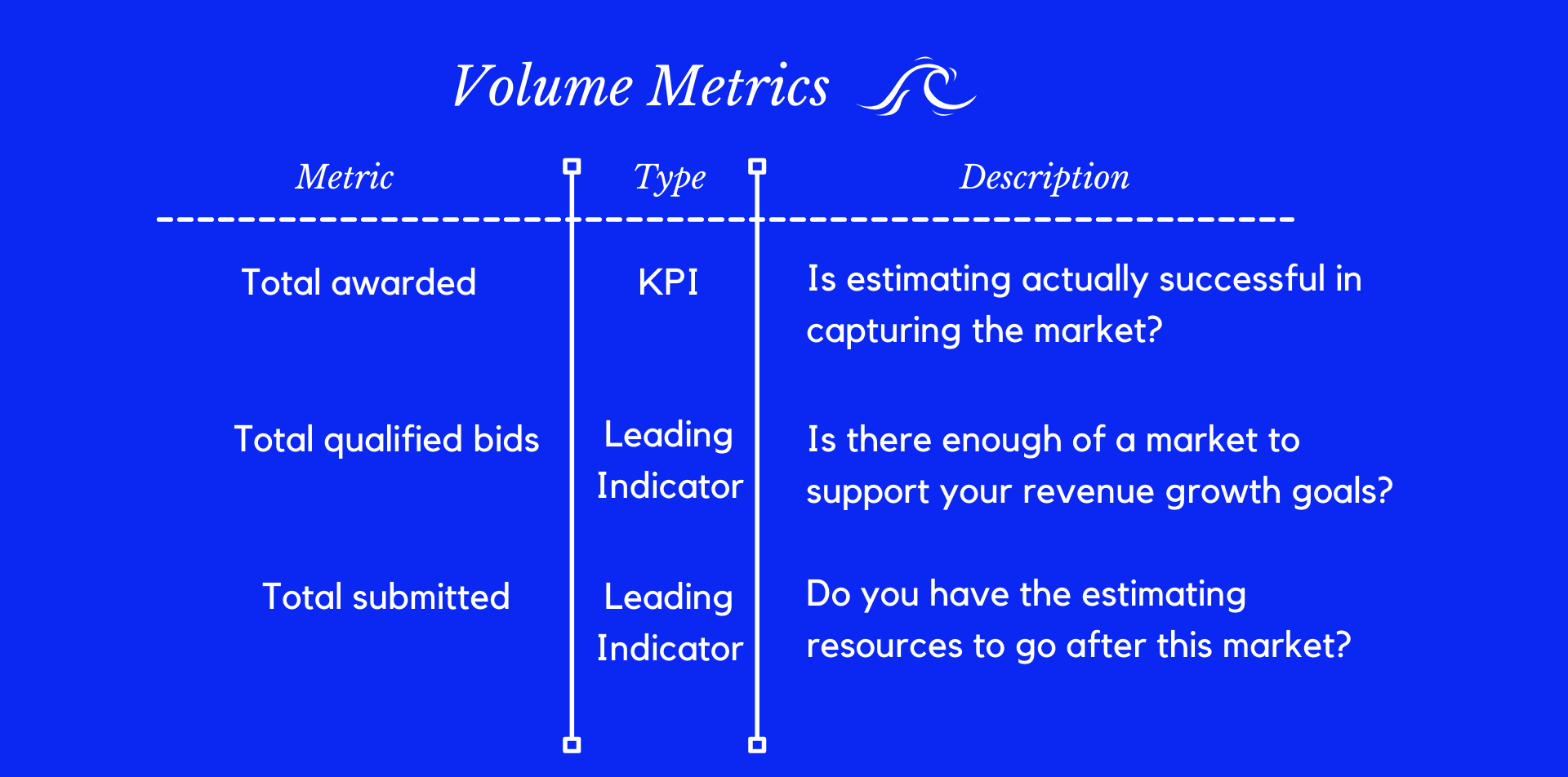Bidding report cards
Written by Andy Lee

Most subcontractors seek to be data-driven about bid prioritization and VPs in estimating are responsible for asking these questions:
- What bids should my team go after to maximize profitability?
- Who are my best GCs? Who are my worst GCs?
- How should I be setting targets for my team to hit our growth goals?
The majority of the industry relies on just two metrics to be data-driven about those questions: total revenue and win-ratio. What might come as a surprise is that these metrics are actually limited and unreliable for understanding a strategy for growth. In this article, we'll present:
- A framework for measuring performance of an estimating team
- 8 metrics that are more powerful than win-ratio and revenue to understand performance
- 2 immediate actions to take to be data-driven strategy about revenue growth
Framework
Every subcontracting business should measure themselves by awarded revenue. Assuming your revenue is profitable and healthy, then this is the single best indicator of a healthy business. What is not obvious are the levers that drive awarded revenue. For this we need a growth framework, which breaks down awarded revenue into 3 parts: volume, efficiency, accuracy.
🌊 Volume
The first lever for awarded revenue is bidding volume. Submitting more bids means more opportunities to win, which translates to more awarded revenue. Depending on revenue growth targets, a subcontractor needs to submit a certain amount of revenue. For example, you cannot be a $10m business if you only bid $5m.
Metric 1: Submitted ($)
Submitted revenue is the total value of the bids your team submits. Submitted volume represents the total possible revenue that your team could potentially capture.
Metric 2: Total qualified bids
Total qualified bids represents that incoming opportunities that your team gets. It's important to look at this number because if this number is small then it doesn't matter if your team is capable and hungry, you're simply not getting enough bids from the market to hit your revenue goals. In this case, you should be investing in business development to generate more bidding opportunities.
Metric 3: Total accepted bids
If total qualified bids is high, but your submitted volume is low then it means the volume of bids you're accepting and working on is low. This indicates that you don't have enough estimating resources and you should invest in either making each estimator more efficient or hiring more estimators.
Problems with volume:
The problem with volume is that you may have large volume, but you may not be capturing that revenue efficiently. In the extreme case, consider a case where a subcontractor bids $100m but only wins $1m, they'll quickly go out of business. Therefore, it's also important to understand how efficiently you're capturing that revenue.

🔪 Bidding Efficiency
The second lever for awarded revenue is bidding efficiency. Metrics in this aspect capture how efficiently you're winning revenue.
Metric 1: Hit-ratio
This tells you for every $1m you submit, on average how much of that $1m you win and it helps indicate how much effort you need to put into bidding to win revenue.
Metric 2: Awarded revenue / # of submissions
We also recommend companies look at this metric because it indicates the amount of work it takes before winning revenue. For example, a GC might award you all of it's work and they might be good contracts, but if your estimating teams have to do 12 rounds of revisions on each bid before winning it, they're spending a lot of resources to win this one job.
Metric 3: Awarded revenue / estimating cost
This is the purest efficiency metric because it indicates how you need to spend on estimating in order to generate $1 of revenue. For example, if your total awarded revenue were $100k and your estimating costs were $10k, then for every $1 of awarded revenue you generate, it costs $0.1 of estimating salary. In short, this metric tells you the true return on investment of estimating.
🎯 Accuracy
The nature of construction means that estimating is never 100% accurate; therefore it's important to measure whether an estimate actually leads to a profitable project. An estimator might have a high-volume and high-hit-ratios, but if projects end up being losses then the company will ultimately lose money.
Strategy
The utility of these metrics is to help point you in the right direction in terms of what lever to pull for increasing awarded revenue.
- Are you off because you're submitting too few bids?
- Are you off because you're not capturing the bids you are submitting efficiently?
- Are you off because estimating isn't estimating projects properly?
The best subcontracting organizations look at these metrics across their GCs, estimators and business divisions in order to understand what their strengths and weaknesses are. Here are 2 initiatives you can start.
Initiative 1: Build an internal report card
Start by building an internal report card for each of your estimators, GCs, and business divisions so you can see these metrics side by side. This exercise immediately highlights where each estimator, GCs and business divisions strengths and weaknesses. As a leader, you'll be able to take these metrics and quickly communicate to the team the areas they should focus their efforts on.
Initiative 2: Break down revenue goals into these parts
Most subcontractors try to hit their revenue goals by simply bidding more. That's the wrong way to approach revenue growth. A better approach is to use these KPIs and benchmark your current performance, then use this to set growth goals across these dimensions (volume, efficiency and accuracy).